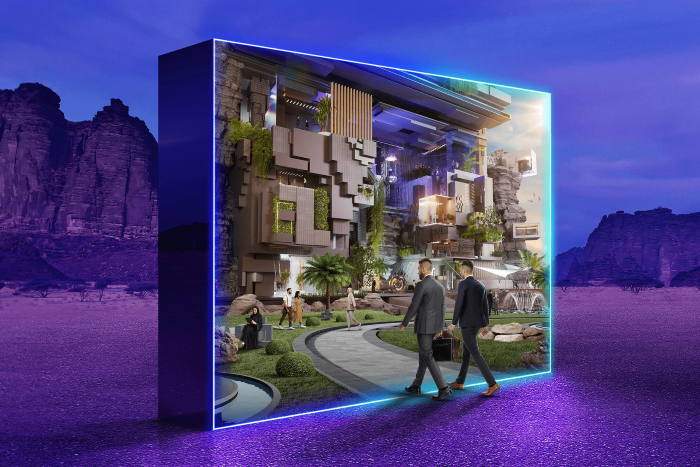The dynamic interplay between real estate investment and economic growth has consistently been recognised as a powerful catalyst that drives economies towards prosperity. Nowhere is this more evident than in Saudi Arabia, where a $1 trillion pipeline of infrastructure and real estate projects is transitioning the economy beyond oil and transforming the Kingdom into a hub for logistics and investments.
From 315,000 new hotel keys by 2030 to sustainable megalopolises like NEOM, the real estate sector underpins Saudi Arabia’s incredible metamorphosis. This is also evident in how investors are responding to the arising opportunities. Investcorp Holdings, the Middle East’s largest asset managers, is one of the latest to have announced plans to invest upward of $1 billion in the Saudi real estate sector over the course of five years.
Economic Diversification and Real Estate Transformation
Recognising the need to reduce its vulnerability to oil price fluctuations and create sustainable growth opportunities, the Kingdom has implemented bold reforms and ambitious plans to transform its economic landscape. The real estate sector’s growing significance in Saudi Arabia stems from its potential to drive economic growth, attract foreign investment, create employment opportunities, and enhance the quality of life for citizens.
As the Kingdom seeks to develop various non-oil industries, such as tourism, entertainment, finance, and technology, the demand for modern and well-equipped real estate assets has soared – a trend that will continue to define the market for the next few years. Real estate contributes around 7% of Saudi Arabia’s GDP , 9.4 percent of the kingdom’s non-oil GDP, and supports more than 120 other sectors. According to PwC, it has created 40,000 job opportunities as of 2021. The goal is to increase the sector’s contribution to 10% of the total GDP by 2030.
Government initiatives and investment opportunities
Vision 2030, the blueprint that outlines Saudi Arabia’s long-term goals for economic diversification and social transformation, is one of the key drivers of the real estate sector’s rising prominence.
Giga projects such as NEOM, Qiddiya, the Red Sea Project, have become catalysts for significant investments in Saudi Arabia and have captured the attention of both domestic and foreign investors, driving a surge in investment activity. To augment this further, the Saudi Arabian government has implemented a range of policy incentives that have created a fertile ground for investments.
In a bid to attract more foreign investment, Saudi Arabia has recently relaxed its property ownership laws for foreigners. Under the new law, foreigners are allowed to own real estate assets across commercial, residential, and agricultural sectors anywhere in the Kingdom. Additionally, the government’ levy of 2.5% white tax on undeveloped, vacant plots has also increased the volume of plots available for development in urban areas.
To meet the ambitious goals laid out in Vision 2030, Saudi Arabia is placing great emphasis on attracting foreign direct investment (FDI). By 2030, the Saudi Arabian government aims to reach USD 100 billion in annual FDI – a goal that seems reachable if current investment trends areto continue.
Conclusion
Since the announcement of Vision 2030 in 2016, Saudi Arabia has captivated the world with its ambitious plans for a vibrant society and a thriving economy. As a testament to the nation’s commitment to showcasing its remarkable real estate market, the highly-anticipated Cityscape Global nexhibition takes centre stage in September in Riyadh. Renowned for launching groundbreaking projects includingthe Burj Khalifa and Battersea Power Station, this year’s record-breaking event steps into the Future of Living, exploring trends and innovations across sustainable real estate investments in Saudi Arabia and globally.
Cityscape Global, www.cityscapeglobal.com




